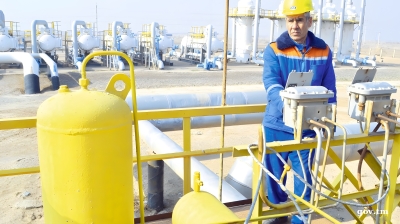Georgia must brace for a significant economic impact from the coronavirus crisis on the immediate horizon but, provided the epidemic is contained within a relatively short period of time, healthy long-term trends in the small country’s economy that appear to have set in might limit the damage.
The Georgian Dream-led government knows full well that the economy is already suffering from extensive travel bans imposed as regards China—the epicentre of the outbreak—and South Caucasus neighbour Iran—which by March 6 reported 4,747 coronavirus infections and well over 100 deaths. The hindering of trade flows and contacts is inevitable.
The 2019 economic output of Georgia, a country of 3.7mn, has been estimated by the IMF at $17.8bn. Last year, Georgia imported goods worth $858mn (compared to $833.9mn in 2018) from China, while Georgian exports going the other way stood at $227mn (compared to $199mn in 2018), thus making for significant trade flows for Georgia’s small economy. The trends in bilateral trade between Georgia and China are undoubtedly upward, and one can only imagine how much of the new commerce resulted from face to face business meetings between Georgian and Chinese company and trade representatives, the kind of meetings that will no longer take place until the coronavirus threat has been slayed or at least greatly diminished. The same goes for meetings between Georgian and Iranian, Azerbaijani and Armenia business peers. Coronavirus infections have been reported throughout the South Caucasus.
Georgia, Real GDP growth. Source: World Economic Outlook, IMF DataMapper.
“Nowruz blow”
Again looking at disruption to business with Iran, last year saw 14 flights per week from Georgia’s Tbilisi and Kutaisi airports to the Islamic Republic, while approximately, 140,000 Iranians visited Georgia. Iranians typically take trips to the Caucasus as part of their long “Nowruz” Persian new year holidays, which are due to start later in March. That won’t be happening this year, it seems.
The influx of Chinese tourists to the South Caucasus overall and Georgia in particular has been increasing in recent years too, by as much as 40-50% y/y in 2019. The Georgian National Tourist Administration estimates that 50,000 Chinese citizens visited Georgia last year. That compares to 15,000 and 25,000 who headed to Armenia and Azerbaijan, respectively.
Particularly damaging for Georgia would be limitations imposed on the land routes to Russia and Turkey (yet to report a coronavirus case). Both countries are among Georgia’s top trading partners and are major sources of foreign visitors. Russians made up around 19% of foreign visitors to Georgia in 2019, despite the travel ban imposed by the Kremlin in July after a political row about anti-Moscow demonstrations in Tbilisi.
Another likely consequence of the coronavirus epidemic (as I write experts are still debating whether it has become a “pandemic”) could be reduced remittances from abroad, which represent a significant share of Georgian fiscal revenue).
Exposed economy
Now we come to some factors that could limit the negative economic impact of the coronavirus crisis on Georgia’s exposed economy.
First up is the fact that the tourist season in Georgia does not really take off until April-May, when the first large numbers of foreign tourists arrive. Might the coronavirus shock to the system be over by then?
Georgia’s number of foreign visitors was up 19% y/y last year so growth might conceivably help counter coronavirus fall-off. Moreover tourists from Iran and China, only spent $190mn in Georgia in 2019—not a critical amount even for the country’s small economic output of nearly $18bn of which tourism contributed $3.5bn last year.
Georgia’s national currency, the lari, might also help the country stay resilient to the COVID-19 emergency. After depreciating throughout 2018-2019, it has this year become significantly stronger at 2.79 to 1 USD.
A further stabilising factor on a long-term basis is Georgia’s robust economic growth. More than 4% is expected for 2020. As things stand, it seems unlikely that coronavirus consequences could cut this down to much lower than 3.5%, although this is stated at the risk of uttering “famous last words” as developments with the outbreak are developing at a fast and furious rate.
In conclusion, at this point the impact of the epidemic/pandemic as regards adverse effects on Georgia caused by loss of business with Iran and China is something the country should be able to stomach without undue difficulty, but the economic losses that would be caused by closed travel links with Russia and Turkey could become debilitating.
Emil Avdaliani teaches history and international relations at Tbilisi State University and Ilia State University. He has worked for various international consulting companies and currently publishes articles focused on military and political developments across the Eurasian continent.
Features

Kazakhstan defies global FDI downturn as investors target new sectors
Renewables, agribusiness, data centres and advanced manufacturing among new magnets for investment sitting alongside oil, gas and mining.
_1762193126.jpg)
Is Venezuela's resource wealth Trump's real target?
As US military forces mass in the Caribbean, Venezuela's oil and mineral wealth emerges as a potential prize in a looming confrontation that will likely result in the ousting of President Nicolas Maduro.

The US now sees China as an equal - it is time for Western media to wake up and do the same
China was long filed under “too foreign, too dangerous, too different” in many Western newsrooms. Not anymore. Beijing is now impossible to ignore as American leaders have realised. Western media outlets need to wake up to this reality too.

COMMENT: China’s latest economic conquest – Central Asia
For the five Central Asian republics - Kazakhstan, Kyrgyzstan, Tajikistan, Turkmenistan and Uzbekistan - China has in recent years emerged not only as a dominant trading partner, but increasingly as the only partner nearby that can actually deliver.





